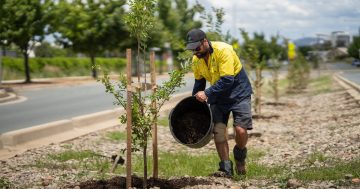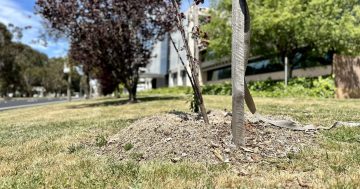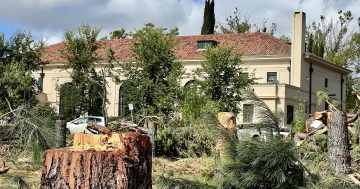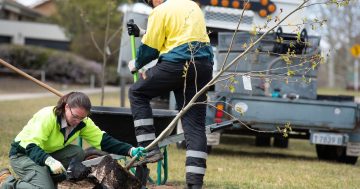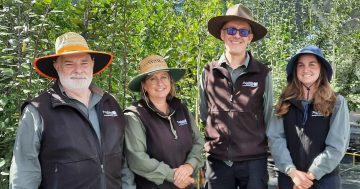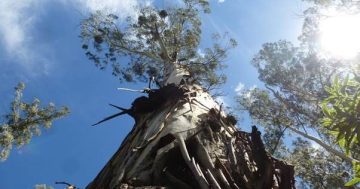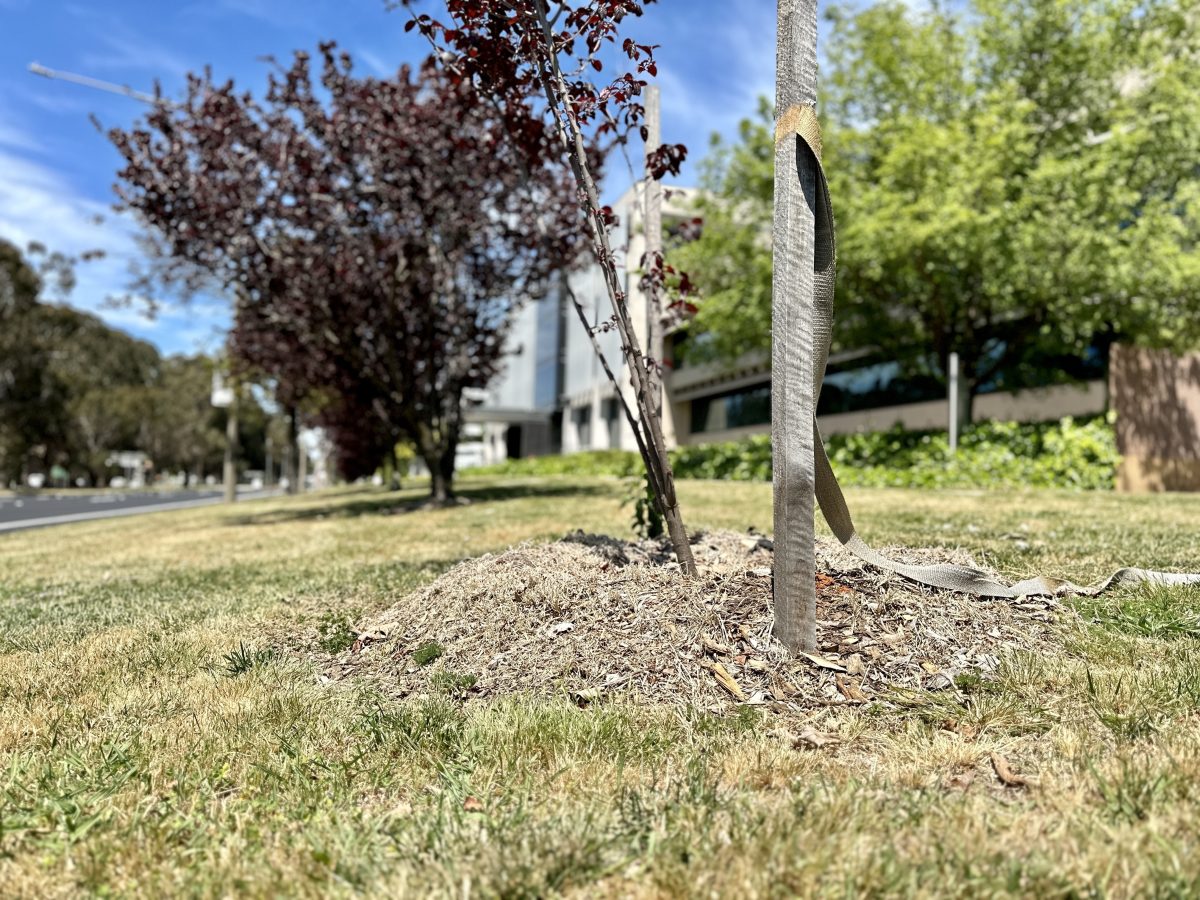
The ACT Government planted 12,650 new trees during the 2022-2023 financial year. Photo: James Coleman.
Spotted new tree plantings in your street and not happy about it? You’re not alone.
The ACT Government is on a mission to grow tree canopies in the suburbs to 30 per cent by 2045. The current figure is around 20 per cent, so this means 500,000 new trees will need to be planted over the next 22 years, at a rate of around 22,700 per year.
The aim for the 2022-2023 financial year was 18,000, but in its annual report, the Transport Canberra and City Services (TCCS) directorate revealed it fell short of this quota by 5350 trees (or 30 per cent) due to a “variety of factors”.
These include things like “procurement delays, limited contractor availability … persistent wet weather impeding access for planting, limitations on suitable planting sites due to planting restrictions”, as well as “refusal of street tree plantings by adjacent residents”.
In other words, some residents have been tearing out the new plantings.
This is possibly because they want to park their car on the nature strip, or because they simply don’t want a tree near their home. City Services crews might water and mulch the new planting initially, but it is ultimately the resident’s job to look after the tree and clean up after it.
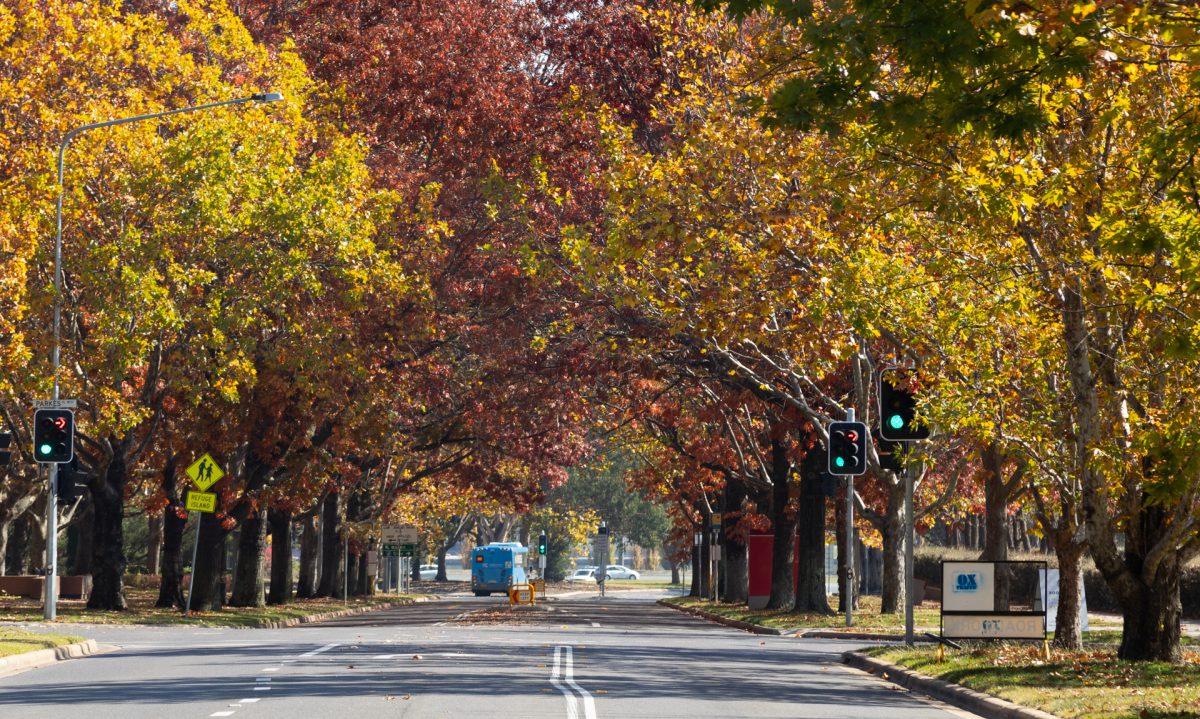
Street trees have their upsides … Photo: Michelle Kroll.
Of the 12,650 trees planted throughout the 2022-2023 financial year, 5211 were planted on street verges and laneways.
The government didn’t reveal how many of these have since gone missing, except to say “the locations are evenly distributed across Canberra and do not suggest a ‘hotspot’.”
“While vandalism of trees planted … was identified, it is not considered to be a significant impact,” a spokesperson told Region.
In other words, they’re also watching. From up high.
Those protected trees located in construction sites are regularly inspected for damage, but the government uses other means to keep tabs on those hidden from view in the likes of private backyards.
“Newly planted or juvenile trees are monitored through ArcGIS Field Maps, which includes reporting of vandalised or missing trees,” the spokesperson said.
‘ArcGIS’ is an online geographic information system (GIS) software fed with imagery from satellites. This allows the government to create a precise GPS coordinate for each new planting – down to a few centimetres – complete with a photo of it.
Every five years, the government also uses ‘LiDAR’ (Light Detection and Ranging) to check canopy coverage. Aeroplanes or helicopters pulse the land below with infrared lasers, which bounce back to a GPS receiver to form a topographic map of any tree three metres high or more.
But what if you, say, happen to drop a can of petrol near the planting’s root system and it inexplicably dies? You’re not even off the hook then, because the government can do tree ‘autopsies’ in the case of suspected poisonings.
“Where possible and appropriate, samples of suspected poisoned trees are collected and sent for analytical analysis including testing for foreign contaminants, such as poisons or petrochemicals,” the spokesperson said.
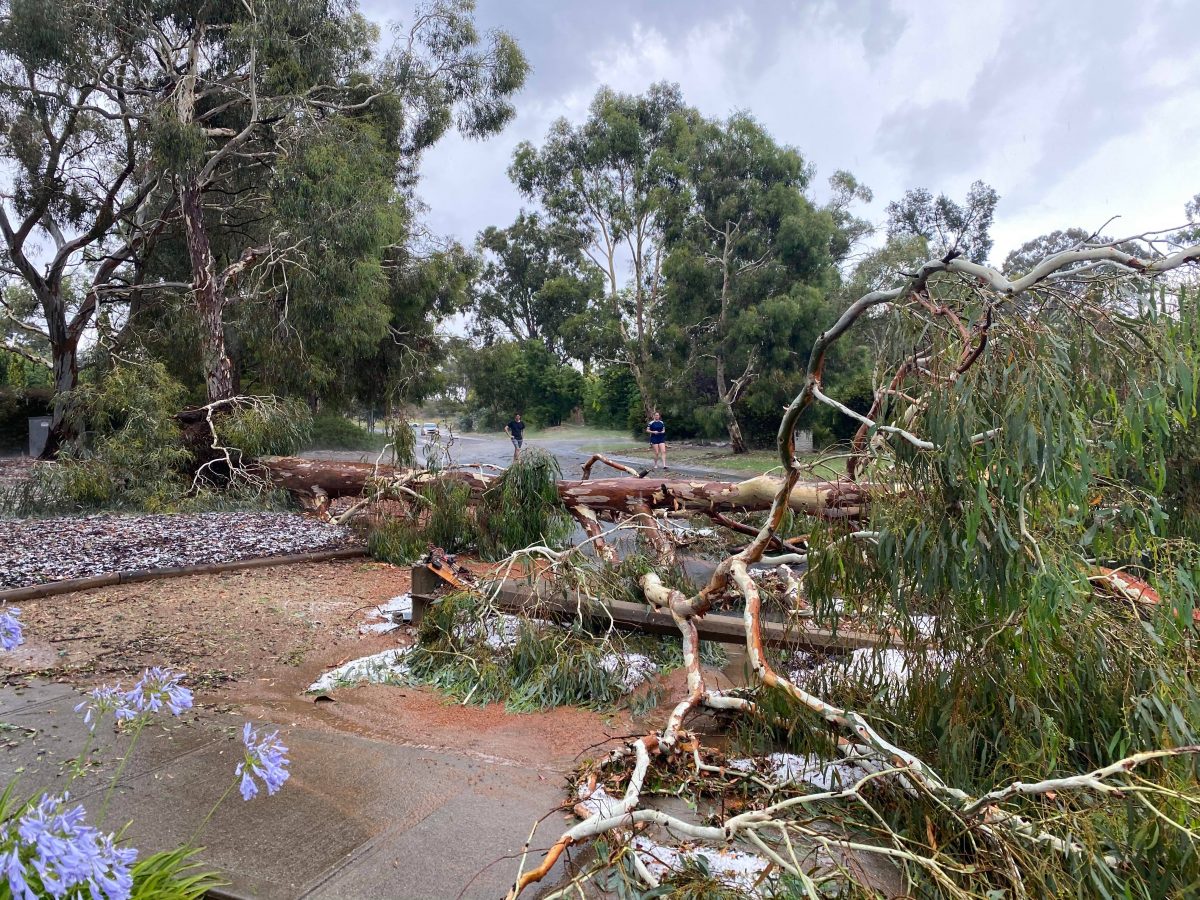
… and their downsides. Photo: Melanie Broadbent.
Then there are the fines.
From 1 January next year, the Tree Protection Act 2005 becomes the Urban Forest Act 2023, with harsher penalties for those who commit a criminal offence and remove or damage a “public asset”.
Under the changes, trees at least eight metres high (12 metres under current law) or with a circumference of at least one metre (1.5 metres currently) will be protected – even if they’re on private property. Even large dead native trees will be protected, as a habitat for animals.
A person who intentionally damages a protected tree will face a fine of up to $80,000, a change on the current maximum of $64,000.
Might almost be cheaper to buy a new house without a street tree.












